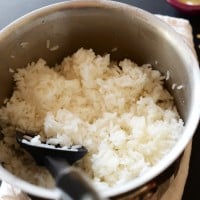Top Ten Best Foods to Have in Your Long Term Storage
It doesn't necessarily have to be and end of life as we know it doomsday scenario to make you wish you had an emergency food storage. It could be something localized like a natural disaster or even something relatively short term like a sever winter storm that could cause you and your family to clean out your fridge and have to resort to eating from a reserve stash. It could even be something like a community panic caused by the fear of a catastrophic event (COVID-19 aka Coronavirus related hysteria) that results in grocery stores selling out and leaving you with nothing.Hopefully maintaining a well stocked long term food storage ends up being nothing more than an exercise in caution. Hopefully the only consequence is you end up eating a ton of lentils at the last minute to avoid having them go bad. But if you do end up needing to rely on your long term storage, you'll be grateful you made the effort.
Below is a list of the best food items to add to your long term storage. They are based on shelf life and usability.

Salt gets a bad rap in times of abundance (the typical diet contains more than enough sodium which can cause a myriad of health problems), but salt is an essential component of our diets that will need to be accounted for in a survival scenario. Salt is required by our bodies for maintaining fluid balance, transmitting nerve impulses, and maintaining muscle function. Sodium deficiency leads to fatigue, headaches, confusion, and even vomiting and seizures.
On top of our physical need for salt, salt is also good for flavor enhancement and food preservation.

Sugar has a shelf life that will likely outlast your own life span. It is also extremely versatile and will help make many of the other items in your food storage more palatable.

Properly sealed, oats can last up to 8 years. Oats are high in fiber, vitamins, and antioxidants. Oats are also very versatile and can be used as a meal by itself, as a thickener for soups and gravies, or to add nutrition to breads, beverages, or desserts.

When dehydrated, corn re-hydrates in 30 minutes, tastes great, has a decent calorie count and creates a complete protein when combined with legumes. When properly packaged, dehydrated sweet yellow corn can last up to 25 years in storage.

Quinoa has a relatively high complete protein content, is highly digestible, and is an excellent source of a variety of nutrients. When stored properly, is can last up to 8 years.

Not only is it tasty, but pasta is high in carbohydrates, nutritious, filling, convenient to prepare, and when stored properly will last for years. No wonder pasta became so popular during the Great Depression.

A hard grain with a decade long shelf life, buckwheat, when combined with traditional wheat flour, creates a near perfect ratio of essential proteins.

Pinto beans are a good source of protein, fiber, vitamins, and minerals. They are a tasty addition to your long term storage that can last over 8 years when sealed and kept from oxygen.


Among the healthiest beans, when sealed and kept away from oxygen, garbanzo beans can last 8 to 10 years. Garbanzo beans are a good source of protein, dietary fiber, iron, and folate. They can be mixed into salads or stews, roasted, or mashed to make hummus.


While it has a shorter shelf life than other supplies, coconut oil can last up to 2 years which is one of the longest among oils. Coconut oil is a great way to add flavor and calories to dishes.







